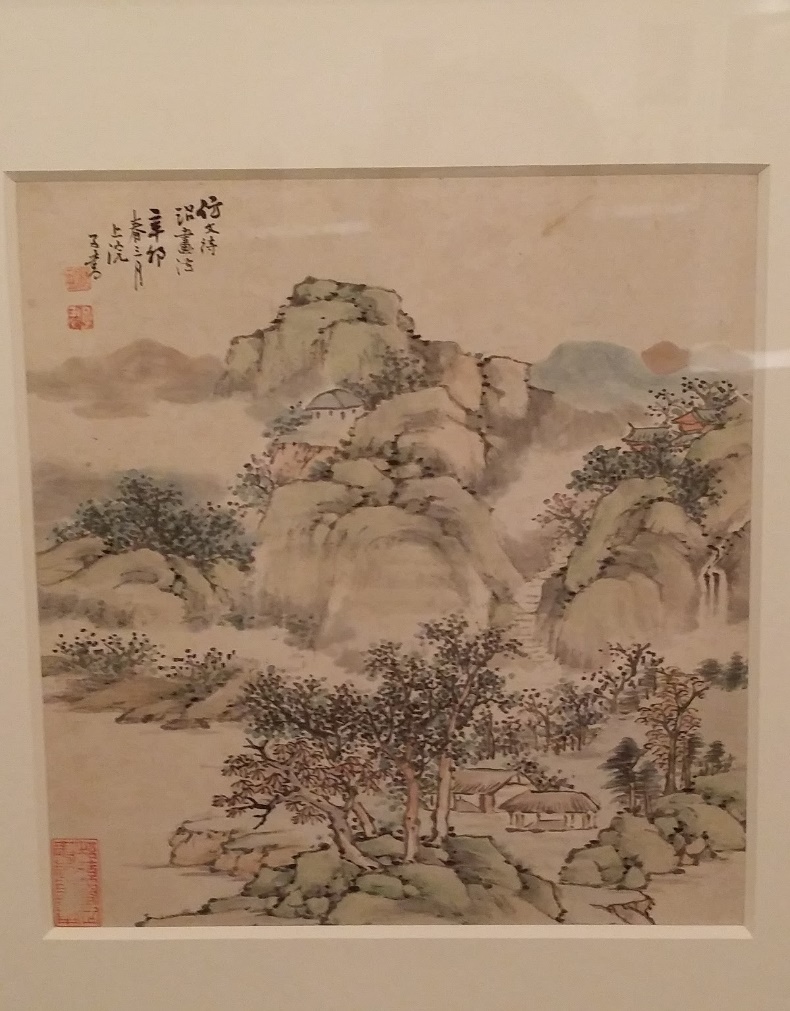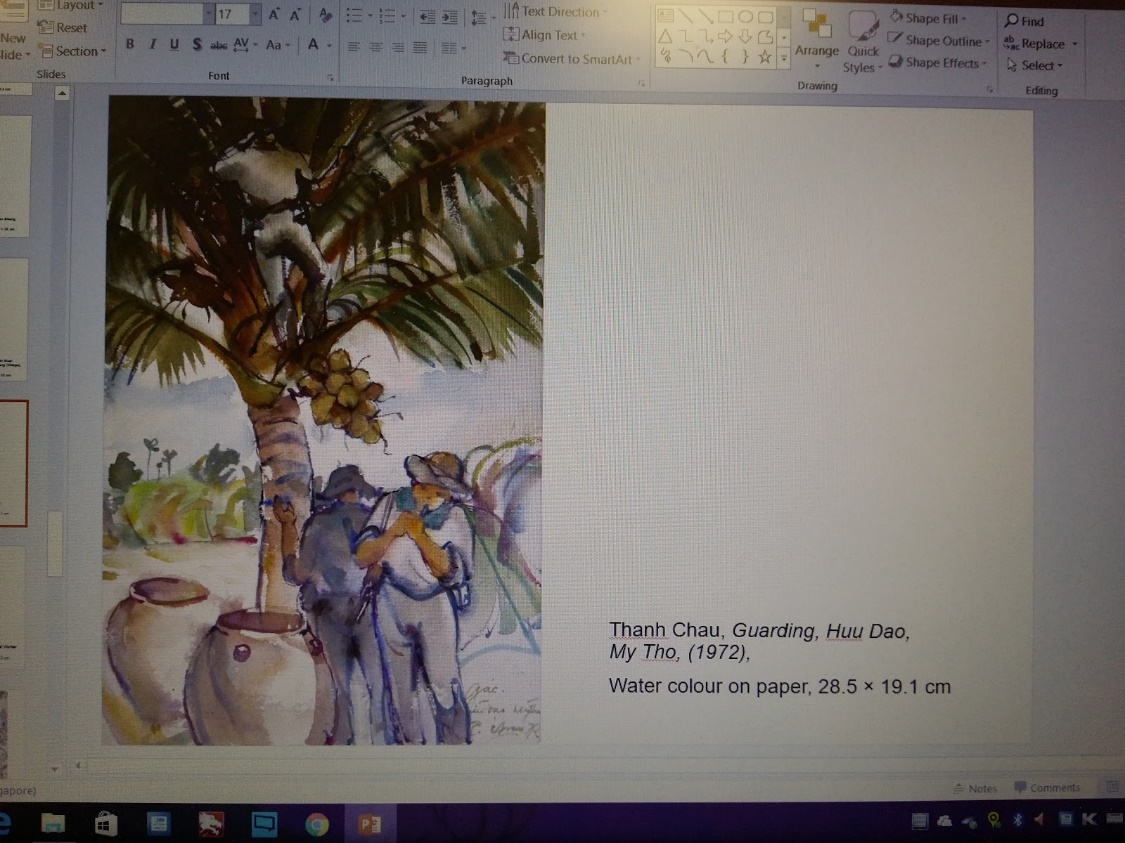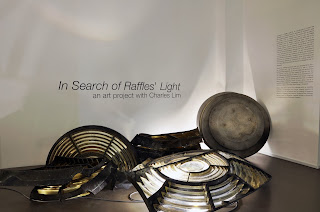Diary of an NUS Museum Intern: Lai Wei Xuan
Note: Diary of an NUS Museum Intern is a series of blog posts written by our interns about their experiences during the course of their internships. Working alongside their mentors, our interns have waded through tons of historical research, assisted in curatorial work, pitched in during exhibition installations and organised outreach events! If you would like to become our next intern, visit our internship page for more information!
-




-
Lai Wei Xuan is currently a JC2 student at Nanyang Junior College. She joined the NUS Museum for two weeks as part of Nanyang Junior College's Work Attachment Programme. Wei Xuan was attached to the Collections & Curatorial teams, assisting in administrative work for upcoming projects. In this blogpost, Wei Xuan reflects on her time with us.
“Short but meaningful”. This phrase sums up
my 2-week long internship at the NUS Museum. These two short weeks really
opened up my initial perspectives of art, as well as satisfied my curiosity of
the behind-the-scenes actions going on in a museum.
My initial perception of how a museum runs
was for curators to work on a theme which they are assigned to, and from there
set up exhibitions. However, I soon came to realise that administrative work is an integral part of running a museum. One of the first tasks that I was
assigned by Greg, AD for Admin & Ops, was to key in acquisition numbers of the museum’s artworks so
that the museum’s art collections can be made available online for people to
view. That was when I realised that even the curators
themselves have to do this tedious administrative work, which forms the not so
glamorous job scope of a curator.

Doing
administrative work is part and parcel of the job of both a curator and an
intern.
I was very lucky to have Austin, my
intern-mate, to show me around the museum, and to give me a mini guided tour on
the Ng Eng Teng collection, a collection he was assigned to research. His detailed
explanations of the various sculptures of Ng Eng Teng really broadened the way
I view artworks. With a
broadened and more open mind, I was able to better appreciate the beauty of the intricate brush
strokes of Chinese paintings and detailed designs of Chinese ceramics from the
Lee Kong Chian Art Collection, which reflected the various flourishes in each
dynasty.

My
personal favourite will be Sun Kai’s, Landscape. His intricate and detailed
brush strokes painted a realistic picture of olden China in the late 19th
century.
I was also tasked by my mentor, Siang, Curator of the Lee Kong Chian Collection, to
create powerpoint slides for the Vietnam War collection, which will be shown in
the exhibition in early January next year. As there is limited
space to display the hundreds of Vietnam War paintings and propaganda posters,
the only solution is to showcase the works through powerpoint slides which will
be played on TV monitors at the exhibition. Visitors will then be exposed to
more artworks created during the War, and learn about the soldiers and common
people’s lives during the war, which are portrayed vividly through the artists’ works.

Creating
PowerPoint slides for the artworks by inserting pictures of artworks and its
descriptions.
The visit to the Baba House was a highlight of
my internship. The tour guides were so passionate about the Peranakan culture
that they explained the significance of almost every nook and cranny of the
house and answered visitors’ questions with excitement. I, too, found myself
with a huge takeaway from the tour as my understanding of Peranakan culture
have definitely deepened. Who would have known that the slightest detail of a
piece of furniture of the Peranakans will have a symbolic meaning behind it?

Lantern
at the front yard of the Baba House which has the family’s name.
Although it was only for 2 short weeks, not
only have I gained new-found knowledge, but also met people with such strong
passion for the arts that I have gained respect for them. Never would I thought that I would have a chance to work with
curators who tirelessly work on planning exhibitions, and making sure their
interns have a better understanding and broader perspectives for the arts.
Firstly, I would like to thank Michelle and Trina for giving me this
opportunity to intern at the museum. (Thank you Michelle for the short but
detailed tour you gave me!)
Secondly I would like to thank the staff at
the office: Sidd, Greg, Kenneth, JJ, Francis, Donald for being nice and patient
to a young intern and exposing me to the behind-the- scenes action going on in
a museum's office.
Thirdly, a big thank you to Siang, my
mentor, for being ever so patient with me even when I made mistakes.
Last but not least, thank you Austin, for
being a good friend, making my internship even more enjoyable, showing me
around the campus, broadening my perspectives for the arts with your strong
passion, and deepening my understanding of boy-school culture. (Thank you for
the cake treat!)


Comments
Post a Comment